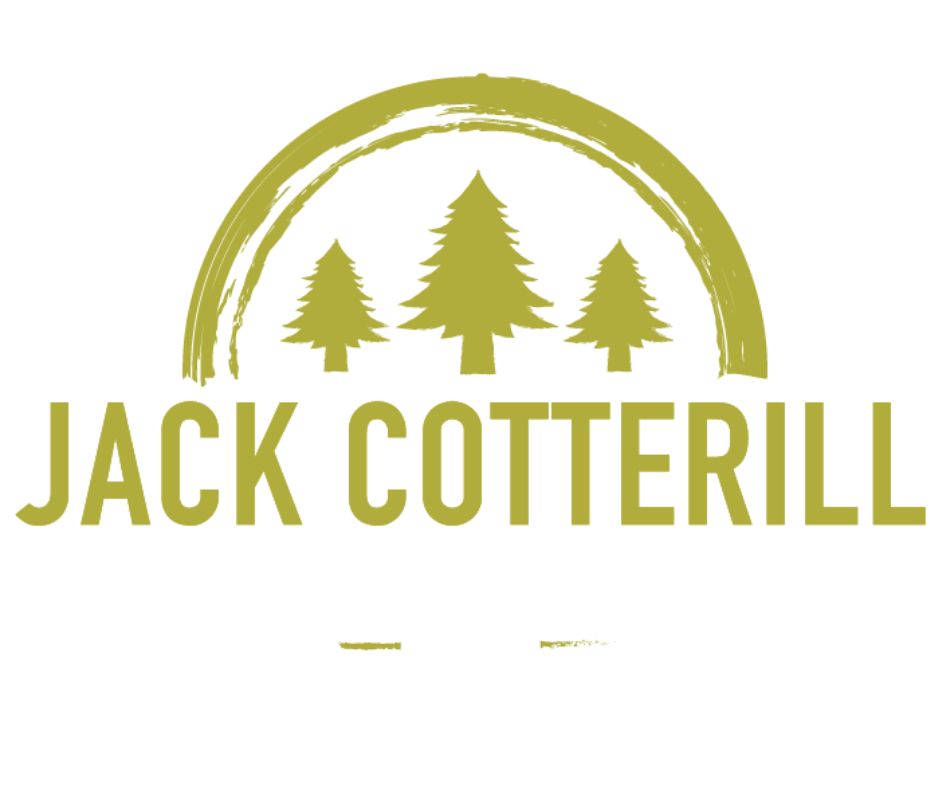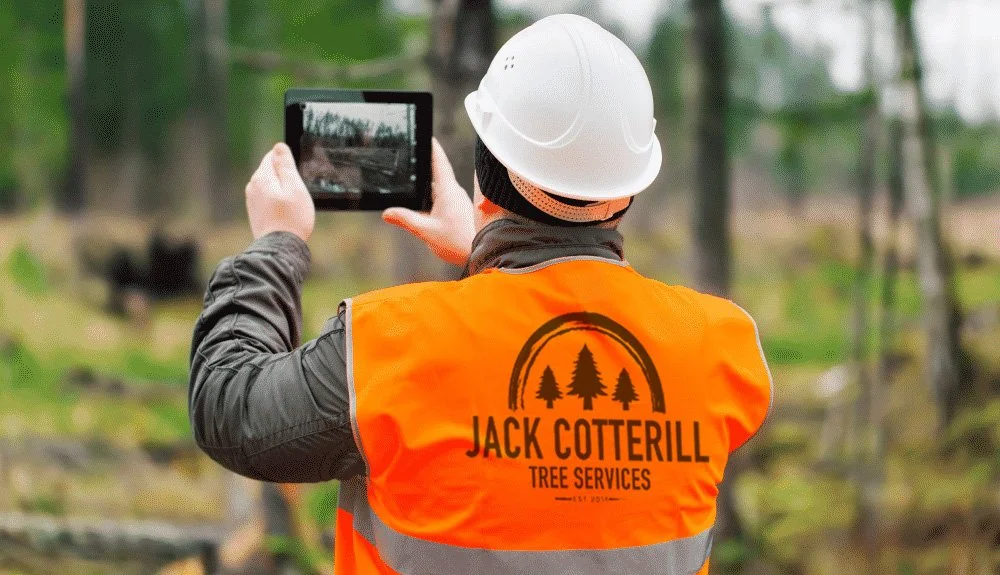Tree Surgeon Terminology
Jack Cotterill Tree Services believes that providing clear explanations of tree surgery terminology is immensely valuable for clients and staff alike.
Understanding terms like crown reduction, crown thinning, crown lifting, pollarding, tree felling, sectional dismantling, dead wood pruning, and stump grinding helps clients make informed decisions about the care and management of their trees.
This knowledge empowers clients to communicate their needs more effectively and understand the scope and benefits of the services provided. For staff, having a standardized terminology ensures consistency and precision in service delivery.
By demystifying these terms, Jack Cotterill Tree Services aims to foster transparency, trust, and a collaborative approach to tree care, ultimately enhancing customer satisfaction and promoting the health and safety of the trees and landscapes they manage.
Crown Reduction
Crown reduction is a tree pruning technique designed to decrease the overall size of a tree's canopy. This process involves selectively removing branches from the upper and outer parts of the tree, reducing its height and spread while maintaining its natural shape.
The primary goal of crown reduction is to alleviate stress on the tree by lessening the weight and wind resistance of the crown, which helps prevent structural failures such as branch breakage. Additionally, it improves light penetration and air circulation within the canopy, promoting the tree's health and stability.
Typically, a crown reduction involves reducing the tree's crown by 10-30%, depending on the tree's species, condition, and the specific objectives of the pruning. Professional arborists perform this technique to ensure precise cuts that avoid damaging the tree.
Crown Thinning
Crown thinning is a tree pruning technique aimed at selectively removing branches throughout the tree's canopy to reduce its density without altering the tree's overall shape or size.
This method focuses on removing smaller, weaker branches, particularly those that are crossing or rubbing against each other, to allow better light penetration and air circulation within the tree. By doing so, crown thinning reduces the weight and wind resistance of the tree, decreasing the risk of branch breakage and improving the tree's health and vigor.
Typically, crown thinning involves removing about 10-20% of the live foliage, depending on the tree's species, condition, and specific pruning goals. This process is performed by professional arborists who ensure that the thinning is done evenly throughout the crown to maintain the tree's natural appearance and structural integrity.
Crown Lifting
Crown lifting, also known as crown raising, is a tree pruning technique that involves the removal of the lower branches of a tree's canopy.
This process is aimed at increasing the clearance between the ground and the lowest branches, which can be beneficial for several reasons. Crown lifting enhances visibility and access beneath the tree, making it safer for pedestrians, vehicles, and buildings. It also improves light penetration to the area below the tree, promoting the growth of grass and other plants.
Additionally, crown lifting can help balance the tree by redistributing weight and reducing the risk of lower branch breakage. This technique is often used in urban areas to ensure trees do not obstruct pathways, roads, or structures. Professional arborists perform crown lifting carefully to avoid over-pruning, which can stress the tree and affect its health.
Pollarding
Pollarding is a tree pruning technique that involves the systematic removal of the upper branches of a tree to promote a dense growth of new shoots and foliage from the trunk and main branches. This method is typically started when the tree is young and involves cutting back the main stem and branches to a predetermined height, usually just above previous pollarding points.
The process is repeated at regular intervals, often every 1-3 years, to maintain the desired size and shape of the tree. Typically, pollarding involves removing about 50-100% of the new growth each cycle, depending on the tree species and specific management goals.
This drastic reduction helps control the tree's size, making it suitable for urban environments where space is limited and preventing interference with power lines or buildings. Pollarding should be performed by professional arborists to ensure proper technique and minimize stress and potential damage to the tree.
Felling
Tree felling is the process of cutting down a tree at its base, causing it to fall to the ground. This procedure is typically undertaken for various reasons, such as removing dead or diseased trees, preventing potential hazards to people or property, clearing land for construction or agricultural purposes, or managing forest health and regeneration.
Tree felling requires careful planning and execution to ensure the safety of individuals and surrounding structures. Professional arborists or tree surgeons often perform this task using specialized equipment and techniques to control the direction of the fall and minimize damage.
The process includes assessing the tree's condition, determining the best felling direction, making precise cuts, and employing safety measures to manage the tree's descent and aftermath. Proper tree felling not only enhances safety but also facilitates the effective use of the resulting timber or wood debris.
For more details read our Tree Removal Page.
Sectional Dismantling
Sectional dismantling, also known as section felling or piecemeal dismantling, is a tree removal technique used in confined spaces or areas where felling the entire tree in one go is not feasible due to the presence of obstacles such as buildings, power lines, or other structures.
This method involves cutting the tree down in manageable sections, starting from the top and working downward. Each section is carefully removed and lowered to the ground using ropes, rigging systems, and sometimes cranes to ensure precise control and safety.
Sectional dismantling is often employed in urban environments or densely wooded areas where space is limited, and the risk of damage to surrounding property must be minimized. Professional arborists carry out this meticulous process, ensuring that each cut and removal is strategically planned and executed to avoid accidents and ensure the efficient and safe removal of the tree.
For more details review our Tree Removal page.
Dead Wood Pruning
Dead wood pruning is a tree maintenance technique that involves the selective removal of dead, dying, or decaying branches from a tree's canopy.
This process is essential for several reasons: it enhances the tree's overall health by preventing the spread of disease and decay to healthy parts of the tree; it reduces the risk of falling branches, which can pose significant safety hazards to people, animals, and property below; and it improves the tree's aesthetic appearance by eliminating unsightly deadwood. Dead wood pruning also promotes better air circulation and light penetration within the tree's canopy, which can stimulate new growth and improve the vitality of the remaining healthy branches.
This pruning technique is typically performed by professional arborists who can accurately identify and safely remove the problematic branches without causing harm to the tree or its surroundings.
Stump Grinding
Stump grinding is a method used to remove tree stumps after a tree has been cut down. This process involves using a specialized machine called a stump grinder, which has a rotating cutting disk that chips away the wood of the stump into small pieces.
Stump grinding effectively removes the visible part of the stump and grinds it down to below ground level, allowing the area to be covered with soil or grass, thereby eliminating the tripping hazard and making the space usable for landscaping or other purposes. This technique is preferred over stump removal, which involves extracting the entire stump and root system, as stump grinding is less invasive and quicker.
By pulverizing the stump, the process also helps prevent pests and diseases that might harbour in the decaying wood, promoting a healthier environment for the surrounding vegetation. Professional arborists or tree care specialists typically perform stump grinding, ensuring the job is done safely and efficiently.
For details review our Stump Grinding page.
Are you in need of tree services in Worcestershire?
Get in touch with Jack Cotterill Tree Services to arrange a FREE no-obligation quote.
Our team of expert, professional and friendly tree surgeons are here to help.









